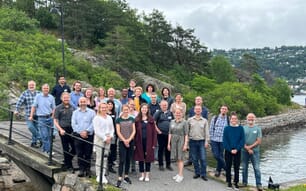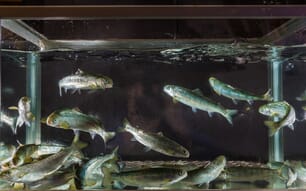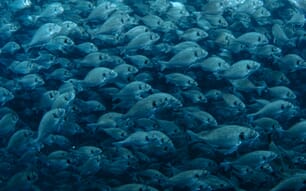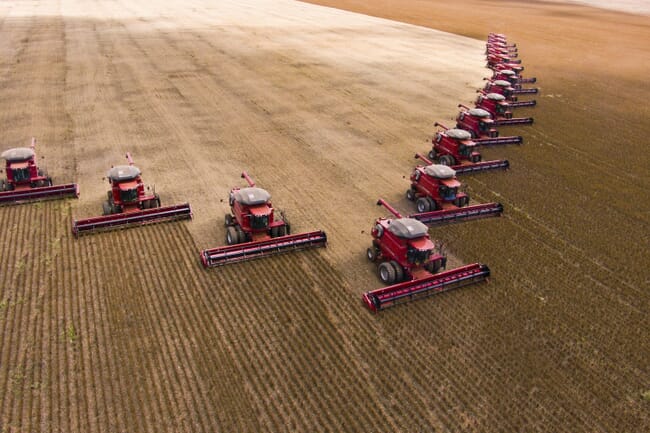
A fleet of combines harvests the crop at a farm in Campo Verde, Brazil © Alf Ribeiro, Shutterstock
Many of you may have wondered about such questions. I know I have. And it should be easy, shouldn’t it, to swap one protein source with another?
But before we look at the answers to these questions, let me turn your attention to the reason why the Norwegian salmon feed industry is currently using about 300,000 tonnes of soy each year. At one point, there was no demand for plant proteins to produce salmon feeds. This changed when the feed demand surpassed the market’s supply of fishmeal. There simply was not enough fishmeal to support the fast-growing salmon industry. Plant proteins, on the other hand, were available in large quantities. And the choice fell on soy. Soybeans are used in food, feed and biofuel at an increasing rate and the world production has increased sevenfold since 1960 to reach about 350 million tonnes. Over 75 percent of this is used in feeds for livestock, of which aquaculture accounts for about 6 percent. Only about 19 percent is consumed by humans. Given the negative impact on the environment of this type of crop production, we need to find alternatives and preferably those with as little impact on environment and climate as possible.
So, back to the questions and the simple and fairly obvious answer: the price of soy, or soy protein concentrate (SPC) which is used in salmon feeds, is today relatively low compared to alternatives of similar quality. When I say quality, I mean nutrient content, digestibility and technical properties. These three parameters – in addition to price and volume – determine the use of an ingredient. So far, none of the alternatives have replaced SPC, but lots of initiatives are taken to get there. I will give you some examples here.
Alternatives to soy
Some of the potential alternatives are already in production. Protein meals from insects, bacteria, yeast and micro-algae are available. In different ways, these organisms can use side streams from other industries to grow, they use little land and little water and are seen by many as promising alternatives to soy.
Other initiatives are looking at marine resources. Some look at harvesting new species such as meso-pelagic fish or copepods which are on lower trophic levels than the conventional harvested species. Ideally this should have less impact on the marine system. This is, however, under discussion. Other ways of using the oceans are to culture species and recent examples of this include tunicates and bristle worms. These feed on debris and the idea is to use them in conjunction with fish farms so that the waste from the farms can be turned into new nutrient resources.

© Helge Skodvin, Nofima
There are many more initiatives not mentioned here, but I hope these will still give an idea that much is being done to come up with better ways to produce tomorrow’s protein sources. However, from Nofima’s point of view, the focus on the technical properties of the end product – the meal itself – is not always there. Low environmental impact and nutrient content are understandably the major focus points. But leaving out technical properties may give lower prices, as well as reducing how much the feed producers can include without failing their strict criteria for physical feed quality.
This is because it is not easy to swap one protein source with another. The extrusion process used to produce most fish feed pellets is complex. Our studies have shown a fairly large change in physical feed quality, depending on the type and amount of the new protein source used. This can be insect meal, tunicates or different micro-organisms. The technical properties of the ingredients can be altered to some extent and thereby provide added value to the product. In my opinion, too few people are looking at this, and I think one reason is that there is little open knowledge of what the technical properties of a protein ingredient for extruded feeds should be.
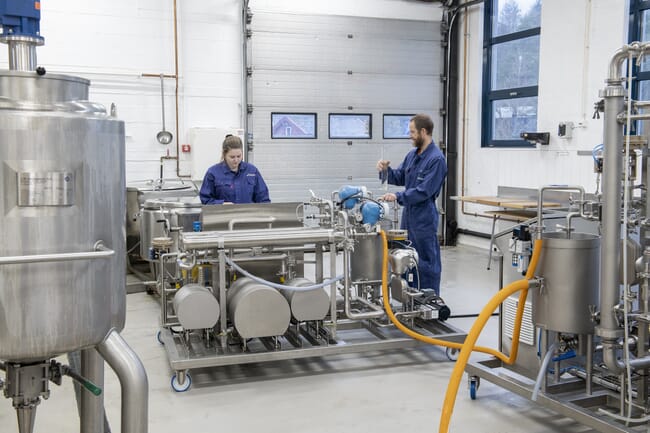
© Helge Skodvin, Nofima
To alleviate this, Nofima, together with the University of Bergen and NORCE, will open a new infrastructure platform called Aquafeed Technology Centre this summer, with an official launch due to take place on 11 August. It is financed by the Research Council of Norway and open to all who wish to use it. This platform offers research infrastructure dedicated to improved and novel utilisation of basically any raw material. Regardless of the raw material, one can use the platform to understand which processing methods to choose in order to get the best product quality. Furthermore, the platform enables new ways of understanding what is actually happening to the ingredients once they are put into the extruder. By doing so, one can predict the effect a new protein meal will have on the pellet quality and avoid processing methods that reduce the value of the ingredient. In other words, one can produce the best protein meal possible with the resources in hand.
Having a good, sustainable, diverse source of raw materials is simply not enough. The end product, or products, should also provide the best use of the chosen source. With this new infrastructure platform, researchers and companies can build the much-needed knowledge on which processing methods to use in order to maximise the use of alternative feed ingredients.
Without this, I think that the many new feed resources will not be able to compete with the conventional ingredients, including soy.
Further reading
To find out more about the issues at stake, read New ingredients fit for feed? | Nofima

